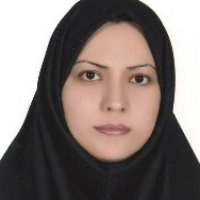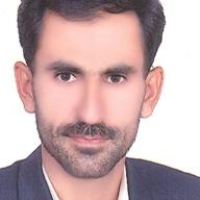s. fallahi
-
مقدمه
جاده های جنگلی از ضروری ترین زیرساخت ها برای دسترسی و فعالیت های مدیریتی واحدهای جنگل هستند. مدیریت پایدار جاده ها نیازمند داشتن اطلاعات مکانی درست از شبکه جاده هاست. در این زمینه روش های مختلفی از نظر صحت، دقت، کارایی و هزینه برای تهیه موقعیت مکانی جاده ها وجود دارد. به دلیل قرار داشتن جاده های جنگلی در مناطق دوردست، کمبود ایستگاه های مرجع، احتمال دسترسی نداشتن به شبکه آنلاین و شرایط موثر بر خطا، بررسی روش های دقیق تعیین موقعیت جاده ها از نظر صحت و دقت به منظور طراحی و اجرای دقیق آنها برای کاهش حجم عملیات خاکی، هزینه های مرتبط با آن و مدیریت آنها ضروری است.
مواد و روش هادر این پژوهش، صحت و دقت روش های تعیین موقعیت مانند PPK، RTK، بسترهای موجود آنلاین O-RTK مانند شمیم، سامانه موقعیت یاب جهانی دستی و نرم افزار تلفن همراه در 5 کیلومتر از جاده های جنگلی ارتباطی و درجه دو حوزه 30 رامسر بررسی شد. ابتدا از روش استاتیک سریع، مختصات به منطقه پژوهش گسترش داده شد و بعد از پس پردازش و تعیین نقاط مرجع، مختصات دقیق همه نقاط کنترل زمینی روی آکس جاده به روش مستقیم به دست آمد. سپس مختصات همه نقاط، از روش های مختلف در سه نوبت اندازه گیری شد و برای بررسی صحت و دقت روش های تعیین موقعیت از آزمون های t تک نمونه ای، ویلکاکسون و تجزیه واریانس استفاده شد.
یافته هانتایج آماری بررسی صحت نشان داد که بیشترین میانگین خطا 53/2 متر و 38/2 متر به ترتیب برای GPS دستی و اپلیکیشن و کمترین آن 048/0 متر ، 049/0 متر و 097/0 متر به ترتیب برای PPK، RTK و شمیم بوده است. مقدار RMSE نشان داد که روش های اندازه گیری سامانه موقعیت یاب جهانی دستی و اپلیکیشن، کمترین صحت و روش های PPK، RTK و شمیم، بیشترین صحت را دارند. براساس آزمون های t تک نمونه ای و ویلکاکسون، مقدار خطا (Di) برای همه روش های بررسی شده در این تحقیق برابر نیست. نتایج بررسی دقت نشان داد که روش سامانه موقعیت یاب جهانی دستی با میانگین فاصله 1408/1 متر کمترین دقت و روش های شمیم با میانگین فاصله 0621/0 و RTK با میانگین فاصله 063/0 متر بیشترین دقت را دارند. آزمون تجزیه واریانس داده ها نشان داد که روش های اپلیکیشن، شمیم و PPK، فواصل برابر بین نقاط و همگرایی بیشتر دارند.
نتیجه گیریاز یافته های این تحقیق می توان نتیجه گرفت که روش اندازه گیری PPK، بیشترین صحت و روش اندازه گیری شمیم بیشترین دقت را دارند. بنابراین برای اهدافی مانند بهینه سازی طرح شبکه جاده های جنگلی یا خط پروژه که به اطلاعات مکانی درست نیاز دارند، می توان از این روش ها بهره برد.
کلید واژگان: استاتیک سریع، اطلاعات مکانی، جاده های جنگلی، دقت، صحتIntroductionForest roads are essential infrastructures for accessing and managing forest units. Sustainable road management requires accurate spatial information from the road network. Various methods, differing in accuracy, precision, efficiency, and cost, are available for providing the location of roads. Given the remote location of forest roads, the lack of reference stations, potential inaccessibility to online networks, and conditions affecting positioning error, it is necessary to investigate the efficiency of existing positioning methods.
Materials and MethodsIn this research, we studied the accuracy of PPK, RTK, online platforms such as Shamim, GPS, and mobile apps in positioning 34 points on 5 km of forest roads in watershed No. 30 in the Hyrcanian forest. The coordinates were first extended to the study area using the rapid static method. After post-processing and determining reference points, the exact coordinates of all ground control points on the road were obtained through the direct method. Then, the coordinates of all points were measured three times using various methods.
FindingsThe health survey's statistical results showed that the highest mean differences were 2.53 m and 2.38 m for GPS and mobile apps, respectively. The least mean difference was 0.048 m, 0.049 m, and 0.092 m for PPK, RTK, and Shamim, respectively. The RMSE amount showed that the results from GPS and mobile apps had the least accuracy, and the methods PPK, RTK, and Shamim had the highest. Based on the one-sample T-test and Wilcoxon’s analysis, the amount of differences was not the same within each method through the 34 investigated points. Accuracy analysis indicated that GPS, with a distance mean of 1.14 m, had the least precision, and Shamim and RTK, with 0.0621 m and 0.063 m, were the most precise methods. The analysis of variance showed that the mobile app, Shamim, and PPK had the highest convergence.
ConclusionThe results of this research indicate that the PPK method was the most accurate, and the Shamim method was the most precise. Therefore, these methods can be used for purposes such as optimizing the forest road plan and longitudinal profile that require accurate location information.
Keywords: Accuracy, Forest Roads, Geographic Information, Precision, Rapid Static -
Aims
COVID-19 has affected a worldwide population, causing more than a million deaths from the end of 2019 until now; so the aim of this study was to determine the symptoms of COVID-19 in the Iranian population through a teleconsultation-based service to better deal with it.
Instrument & MethodsThis study was a cross-sectional study that included 12125 individuals calling for COVID-19 screening and consultation from 2 March 2020 to 19 April 2020 with the census method. A telephone number was assigned for consultation with more than 70 nurses responding to first-level questions and more than 30 medical doctors responding to second-level questions. For statistical analysis, a chi-squared test and univariate logistic regression with SPSS 25 were used.
FindingCough was the most common complaint (41.3%), followed by shortness of breath (32.8%), and fever (31.5%). Confusion was the least common complaint (1.6%). Binary logistic regression revealed that men were at a higher risk of COVID-19 compared to women (OR:1.31, 95% CI 1.10-1.55, p=0.002). In addition, older age was a risk factor for COVID-19 (OR:1.02, 95% CI 1.02-1.03, p<0.001). Also, significant positive correlations were found between fever, chills, sore throat, shortness of breath, cough, body ache, and gastrointestinal symptoms with COVID-19 even after adjustment for gender and age.
ConclusionFever, cough, and shortness of breath were the most common complaints in individuals calling for COVID-19 teleconsultation. It’s suggested that in times of crisis, such as the Covid-19 pandemic, remote sensing can be done to raise public awareness and break the transmission chain.
Keywords: COVID-19, Remote Consultation, Risk Factors, Mass Screening, Iran
- در این صفحه نام مورد نظر در اسامی نویسندگان مقالات جستجو میشود. ممکن است نتایج شامل مطالب نویسندگان هم نام و حتی در رشتههای مختلف باشد.
- همه مقالات ترجمه فارسی یا انگلیسی ندارند پس ممکن است مقالاتی باشند که نام نویسنده مورد نظر شما به صورت معادل فارسی یا انگلیسی آن درج شده باشد. در صفحه جستجوی پیشرفته میتوانید همزمان نام فارسی و انگلیسی نویسنده را درج نمایید.
- در صورتی که میخواهید جستجو را با شرایط متفاوت تکرار کنید به صفحه جستجوی پیشرفته مطالب نشریات مراجعه کنید.




